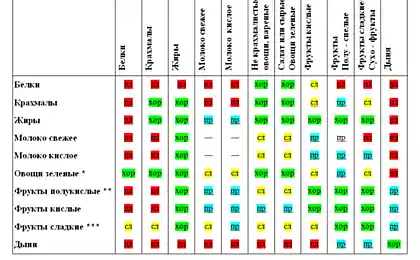415
6 the most necessary products for visual acuity

Which contains the most nutrients for the view (according to different studies) and how many you need to use to use was real? Fish — to the visual Nutritionists recommend us to eat fish two to three times a week. It turns out that ophthalmologists support them in this with both hands! Fish contain the very beneficial fatty acids and polyunsaturated fats, which are needed for eye health. Especially Omega-3.
How much: 300 grams twice a week.
Blueberry — fatigue
This berry is the main component of all vitamin complexes for eyes. It protects our eyes from stress and fatigue. Because bilberries contain anthocyanins, which help maintain healthy capillaries, through which the eye muscles and nerves are delivered nutrients. These substances improves the circulation of blood in eye vessels. Also, blueberries contain vitamins A and C. Due to their antioxidant properties of these vitamins reduce the harmful effects of free radicals.
How much: 1 — 2 tablespoons a day or frozen berries, or in the form of jam, jelly.
Grapefruit — anti-aging of the lens
A grapefruit includes a lot of nutrients: vitamin C, vitamin a, calcium, iron, manganese, potassium, phosphorus, folic acid, and many kinds of vitamin B. But the best part about grapefruit is the content of special substances, bioflavonoids that slow down the aging eye lens.
That is why the most useful part of grapefruit is a transparent skin that separates the segments, which contains these bioflavonoids. Because of them, the fruit acquires a bitter taste, but these substances are very useful for eye health. So you should have a grapefruit whole, without removing the peel.
So the whole grapefruit is much more useful than freshly squeezed the juice out of it.
How much: every day or every other day for one thing.
Carrots — for the "twilight" vision
If you feel that became worse to see in the dark, bright light hurts the eyes, eyes get tired, jump malicious styes, and conjunctivitis hurts, then you seriously are missing the main eye vitamin — A or retinol. We need it for normal functioning of the retina, as part of the pigment that is responsible for "recycling" of light into electrical impulses and transmitting them to the brain.
How much: 150 grams with a dollop of sour cream or vegetable oil two to three times a week.
Pistachios — for retina
For anybody not a secret that all nuts are rich in minerals, vital for normal functioning of the human body. Leaders in nutritional properties among nuts — almonds, walnuts and pecans. But on the first line of the hit parade of useful nuts — pistachios.
In addition to copper, magnesium, phosphorus, potassium, fiber and "good" fats, pistachios contain lutein and zeaxanthin. Although the names of these substances sound mysteriously, they are very useful for the eyes as they help prevent muscle tissue degeneration associated with aging. How to say American researchers, 28-gram serving of California pistachios (about a handful) contains more beneficial antioxidants than any other nuts. That is, 342 micrograms of lutein and zeaxanthin: 13 times more than in the hazelnuts or the glass of orange juice.
How much: a handful or 30 grams every day.
Cabbage — from aches and redness of the eyes
It is also need to eat — I assure nutritionists, though not all (with caution in the acidity of the stomach). For eyes and cabbage, though our native white, though red, is useful in that it contains a lot of vitamins C and e, B1, B2, PP. And also a substance choline. Vitamin K is also rich spinach. Especially a lot of vitamin C contains in sauerkraut — much more than in the same citrus. It helps to eliminate the fragility of the blood vessels (due to the fact that they burst, red eyes), improves blood circulation. Also useful for the formation of collagen required for the regeneration of eye cells and blood vessels.
How much: at least 150 grams three times a week in any form — soups, salads and just.
Source: www.kp.ru/daily/25628.3/793391/























